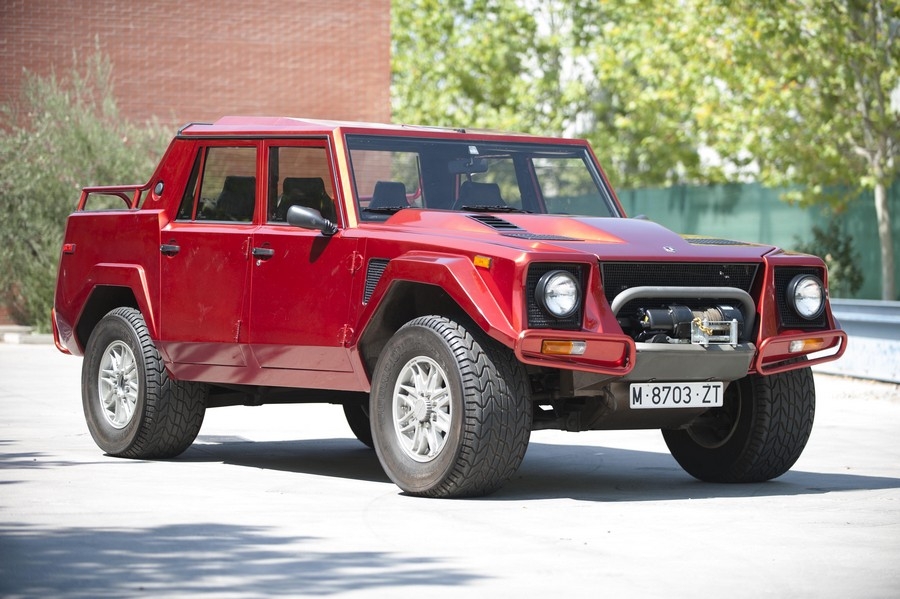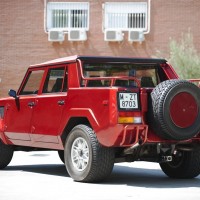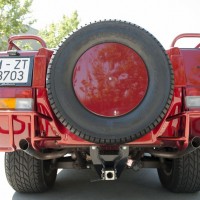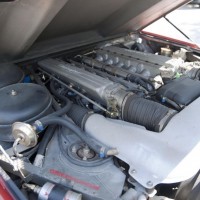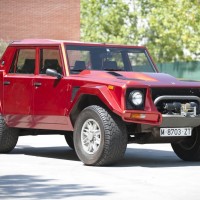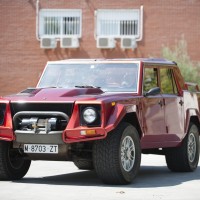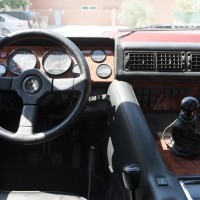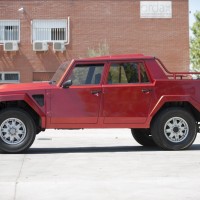SCM Analysis
Detailing
| Vehicle: | 1991 Lamborghini LM002 |
| Number Produced: | 328 |
| Original List Price: | $134,000 |
| Tune Up Cost: | $375 |
| Distributor Caps: | $500 (two required) |
| Chassis Number Location: | Plate on firewall air intake, stamped on right front frame member |
| Engine Number Location: | Inside vee on top of engine |
| Club Info: | Lamborghini Club America, Lamborghini Owners Club |
| Website: | http://www.lamborghiniclubamerica.com |
| Alternatives: | 2013 Brabus B63S, 1967 Maserati Quattroporte Fire Tender, 1977 Jerrari, 1978 Sbarro Windhound |
| Investment Grade: | C |
This car, Lot 14, sold for $226,129 (€166,750), including buyer’s premium, at Bonhams’ “The Zoute Sale” in Knokke Heist, Belgium, on October 11, 2013.
From the ashes of the ill-fated, Chrysler-powered, rear-engine Cheetah off-road project of 1977 came the LM002, a slightly less daft off-road supercar. This car seems less extreme these days, now that vehicles such as the Hummer, Mercedes-Benz Geländewagen, its cousin on steroids — the Mercedes-Benz Brabus B63S — and the Porsche Cayenne Turbo are fairly commonplace. In addition, Maserati and Bentley SUVs are about to hit the market — and once-utilitarian pickup trucks now sport power and luxury unseen in top sedans of a few years ago. The limitations of what can be accepted on a working platform have greatly evolved since the LM002 rumbled onto the market in 1986.
At the time however, the LM002 was probably the most unlikely vehicle seen since the Maserati Quattroporte fire tenders built by CEA of Bologna, Italy, in 1967 for use on race tracks.
Few could imagine what would happen when what might be thought of as a fragile, temperamental, complex 4-cam, 6-carb V12 was forced to operate in an environment of sand, dirt and mud. That the Lamborghini 5.3-liter engine is actually quite robust and that the maker of low-slung supercars could develop a chassis of sufficient strength for the challenge was proven in the end.
Wolf debunks myths
I recently was invited to the Luxury & Supercar Weekend / Shaughnessy Concours in Vancouver, British Columbia, to give presentations on investing in classic cars, specifically Porsche 911s and Lamborghinis. As part of the latter, I had the pleasure of meeting and interviewing Walter Wolf, the colorful Canadian entrepreneur. In the 1970s, Wolf owned a Formula One team, Walter Wolf Racing, which was the last of the non-sponsored privateer bands. The team is famed for being the first — and so far only — team to win its first race, the 1977 GP of Argentina. Wolf is the kind of larger-than-life personality that today’s ever-blander corporate world cannot produce and whose life experiences are practically cinematic.
Wolf made his first fortune in the oil drilling equipment business and was a keen Lamborghini enthusiast and owner.
From the late 1970s into the 1980s, Wolf provided financial protection for the struggling Lamborghini firm. That money essentially paid for the development of the Countach, which, among other issues, could not be sold in the U.S. market. The LM002 project also came to production during this period, and Wolf had interesting comments about it:
First, while the LM002 may have grown from the Cheetah project, it was never intended for military use. Instead, it was envisioned as transport for the oil exploration and production business — one Wolf knew quite well. This makes far more sense, as the audience who owned and ran such companies would certainly be open to a fast, luxurious off-road vehicle that would be as comfortable in the rugged terrain of the oil fields as driving in town.
A limited run
In the end, the market was even smaller than Lamborghini imagined, and planned development of further models was first postponed and then canceled. Ironically, with every manufacturer on the globe now seemingly convinced that their lineup must include an SUV, the LM002 perhaps wasn’t ridiculous but simply ahead of its time. In today’s market, the LM002 would find its life much easier than in 1991. It’s difficult to imagine a group of LM002 owners getting together in Utah to crawl over rocks like the Pinzgauer boys do, but it is quite easy to picture a mass gathering at a spa in Sedona.
Putting aside the usual question of what one does with an ultra-low-mileage vehicle, the price for this Lamborghini was three and a half times as much as the last one listed as sold at auction — in 2011 — in the SCM Platinum Database. However, current asking prices for examples with 20,000 km (12,427 miles) or so on the clock — and with known history and maintenance records — occupy a range between $100k and $180k. As such, the $226k paid here for an “as-new” LM002 doesn’t seem out of line. Devotees of the model feel that the later fuel-injected models are preferable to early carbureted examples, and this can be reflected in prices.
Until the launch of the long-awaited Urus SUV in 2017, the LM002 will remain a cul-de-sac in the timeline of Lamborghini. Nevertheless it is interesting and is likely to continue to fascinate going forward. I would call this truck market-priced. ♦
(Introductory description courtesy of Bonhams.)
